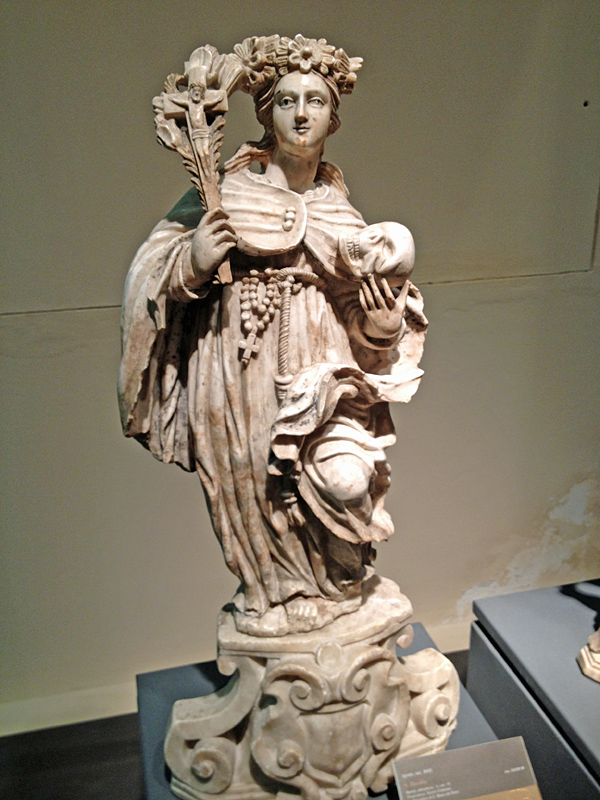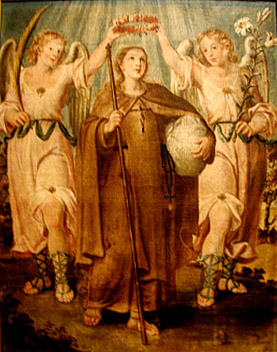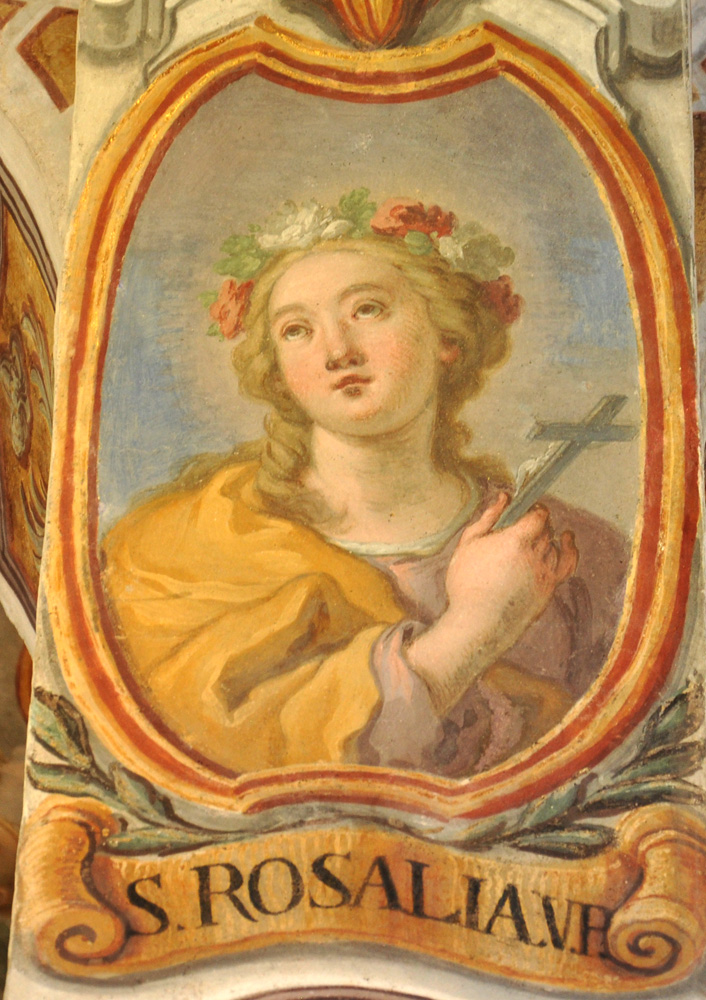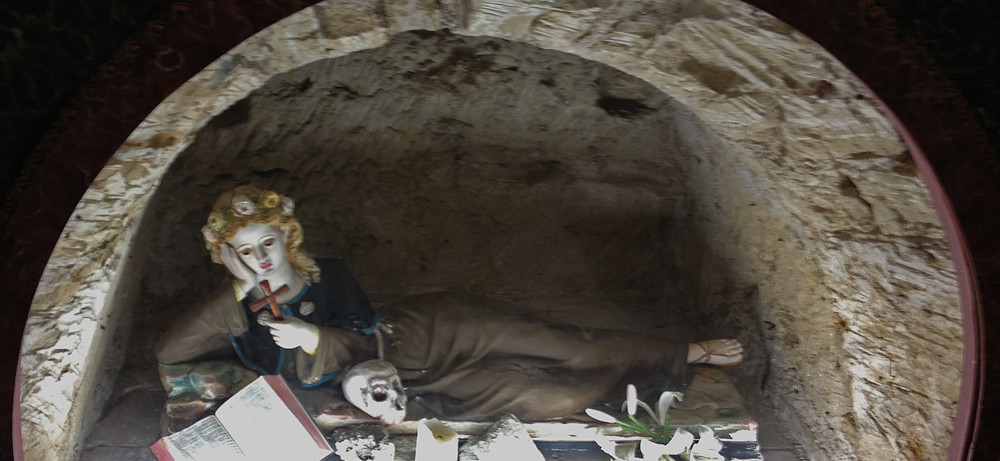Another common iconographic type is a portrait of the saint standing with the garland and holding the crucifix and skull, as at right. Also common are the prayer beads that the legend says were in her hand when she died.2
Some images, such as the second picture at right, show the saint walking the 40 miles from her wealthy family's home to a mountaintop near Bivona, carrying a pilgrim's staff and accompanied by angels. Later the angels led her from that mountain to the one with the rock hollow. The second mountain, then known as Erectense, towered high above her native Palermo and was at the time covered in dark forest and nearly inaccessible. In some narrative images the angels are more clearly portrayed as guides showing Rosalia the way (example).
After Rosalia died her tiny cave became a place of pilgrimage and the Erectense came to be known as Monte Pellegrino ("Mount Pilgrim"). Pilgrimages became especially frequent after 1624, when a procession in her honor was thought to have stayed the course of a plague in Palermo. The grateful city made her its principal patron and had a church built over the cave (Butler, III, 487).
Prepared in 2015 by Richard Stracke, Emeritus Professor of English, Augusta University
Sculpture in the church of San Giovanni dei Ermiti, Palermo, Sicily (see description page).
OTHER IMAGES:

St. Rosalia with the four attributes common in her images: crucifix, skull, rosary, and crown of roses (See description page)

Crowned with roses, 18th century painting (See description page)

An 18th-century fresco with just the garland and crucifix (See description page)
Further images: The volume of the Acta Sanctorum that covers St. Rosalia (published 1748) includes a large number of engravings based on contemporary images of the saint in Palermo and Bivona, with maps and diagrams of her two cells.
ATTRIBUTES
- Crown of roses
- Skull and crucifix
MORE IMAGES
- 1708: A painting of a procession of the saint's relics in 1625.
- 1753: In the margin of a Mexican nun's badge.
DATES
- Feast day: September 4
- Died 1160
BIOGRAPHY
- In English, Butler (III, 486-87) has a brief discussion of St. Rosalia.
- In Latin, see Acta Sanctorum, September vol. 2, 278-414 and especially the Vita by Giordano Cascini, 381-387.
NOTES
1 Acta Sanctorum, September vol. 2, 382-83.
2 Ibid., 383.
